SUMER study #1854: Raster scan around 709.8 Å
- date, time: 10.Jun.99, 12:11 - 16:12 UT
- field of view: 499 - 391 arcsec E, 533 - 233 arcsec S
- slit: 1.0 arcsec x 300 arcsec (number 2)
- raster step size: 1.13 arcsec (3 elementary steps)
- exposure time: 150 seconds
- telemetry: 97 images of 512 spectral x 360 spatial pixels (format 38)
- compression: quasilog-min-max (method 5)
- wavelength: 354.9 Å on reference pixel 513 of Detector B
- rotation compensation: after complete scan, corresponding to
0.75 arcsec after 370.813 seconds
- binning: no spectral, no spatial
- on-board flat field correction: no
Remarks: The scan was performed in west-east direction. Therefore, considering
the Solar rotation, it covers more space (137 arcesc) than the nominal pointing
indicates.
Spectral window

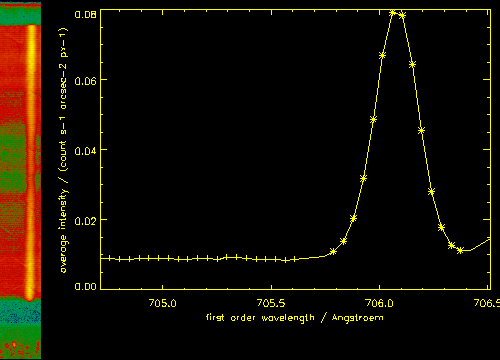
line = *, continuum = +
Mg IX (950 000 K)



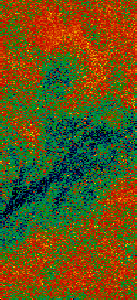
continuum and line intensity, line shift and width
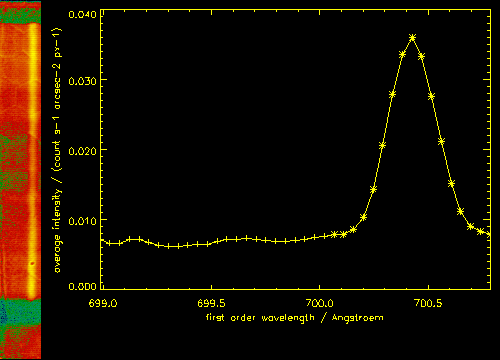
line = *, continuum = +
Ar VIII 700.4 (430 000 K)



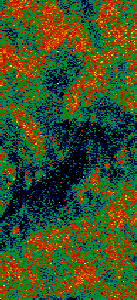
continuum and line intensity, line shift and width
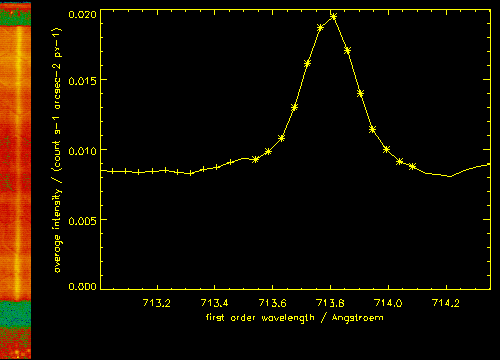
line = *, continuum = +
Ar VIII 713.8 (430 000 K)



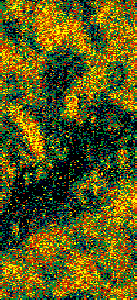
continuum and line intensity, line shift and width
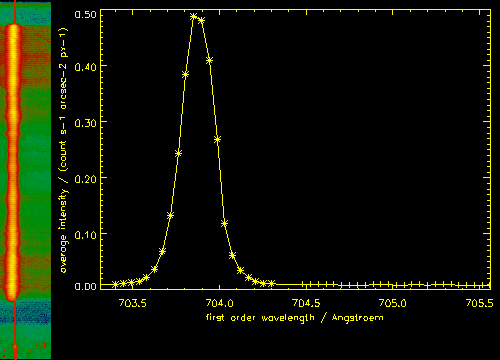
line = *, continuum = +
O III 703.8 (91 000 K)



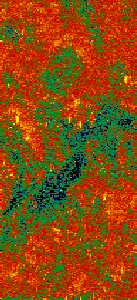
continuum and line intensity, line shift and width
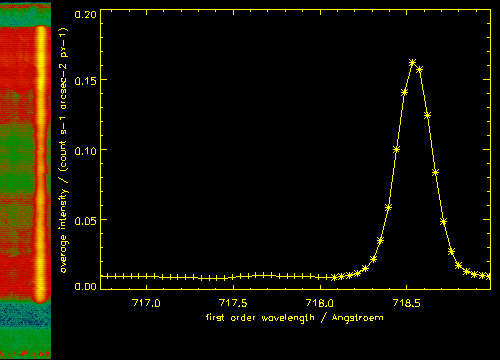
line = *, continuum = +
O II 718.5 (35 000 K)



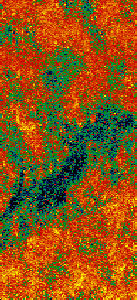
continuum and line intensity, line shift and width
Animation
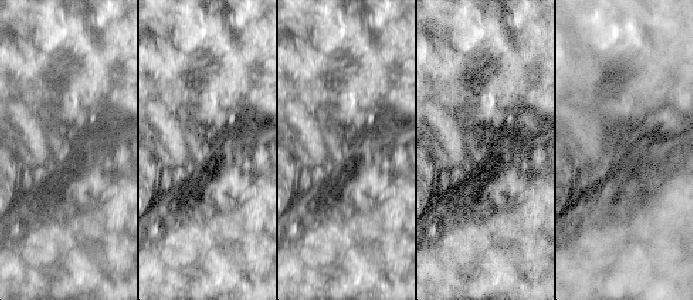
The images may look similar at first glance, but shown in a sequence one can
observe
the different stages of the solar atmosphere. Download the IDL/XDR restore file
S128703MOVIE_XDR.RST (450 KB) and the short
IDL program S128703MOVIE.PRO; after starting the
animation with IDL> .run s128703movie the images will go up through the
stages Continuum, O II, O III, Ar VIII, Mg IX several times.
IED, 05.Oct.99


























